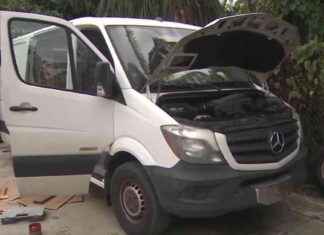After his victory on Sunday at the Roland Garros tournament, Rafael Nadal has reported that he will undergo radiofrequency treatment to try to relieve the pain he feels in his foot due to Müller-Weiss disease.
Doctors Ian MacVeigh, head of the Anesthesiology and Pain Treatment Unit at the CEMTRO clinic in Madrid, and Carlos Nebreda, pain specialist at the Aliaga Institute of the Teknon Clinic in Barcelona, ??explain to this medium what it is about.
It is a minimally invasive technique, they are pulses of radio waves that last a fraction of a second. They are applied from an electrode inserted into the tissue where there is pain, whose active part can measure between 5 millimeters and 15 millimeters in length.
The radiofrequency pulses return the peripheral nerves that transmit pain to a less altered state, like the one before feeling pain. They work as small electromagnetic discharges that act on the peripheral nerve endings, in this case those that are in contact with the bone, and make the nerves stop transmitting so much pain.
Anesthesia is applied in the area where the electrode will be inserted, it is inserted, and the parameters of time and length of radio waves to be applied in the machine that emits them are adjusted. In no case do these pulses exceed 42º C, so the area is not damaged. In the case of applying in competition, corticosteroids can also be added before the radiofrequency pulses.
In the case of Rafael Nadal, the treatment is palliative and does not cure his illness, but rather makes it more bearable. Depending on what rests after treatment, it can improve efficiency, but with effort, training and competition, discomfort will reappear, because its cause has not been eradicated. He will need more sessions if the treatment is effective for him.
No. The only risk is that associated with any intervention in a hospital, that of contracting an infection, but pulsed radiofrequency treatment has no secondary or adverse effects.
It varies a lot from one patient to another. There have been cases in which the pain disappears and cases in which it does not, or reappears after time, but in other pathologies, not in Nadal’s. In the case of the tennis player, several sessions will surely have to be done and the more he forces the foot, the more he will have to resort to this palliative therapy if it is a good alternative for him.
For those peripheral neuropathies that cannot be intervened. It is used to treat Arnold’s neuralgia, and in any peripheral nerve causing a pain picture, which is not to be destroyed, but modulated. In sports competitions it is used in motorcycling, after a fall, so that the motorcyclist is able to continue competing.
You could start immediately, but it is not recommended at all. After pulsed radiofrequency, complete rest is recommended for 10 days, and then begin to gradually recover mobility. The sooner he starts training and competing at a high level, the shorter the effect of the pulsed radiofrequency will last, since in Nadal’s case the origin of the pain is still there.
If pulsed radiofrequency does not work, the alternatives to get rid of the pain are osteotomy or arthrodetic surgery. The first would compromise the power of the athlete, but not his mobility. The last alternative would compromise his mobility, forcing the tennis player to stop training and competing.








